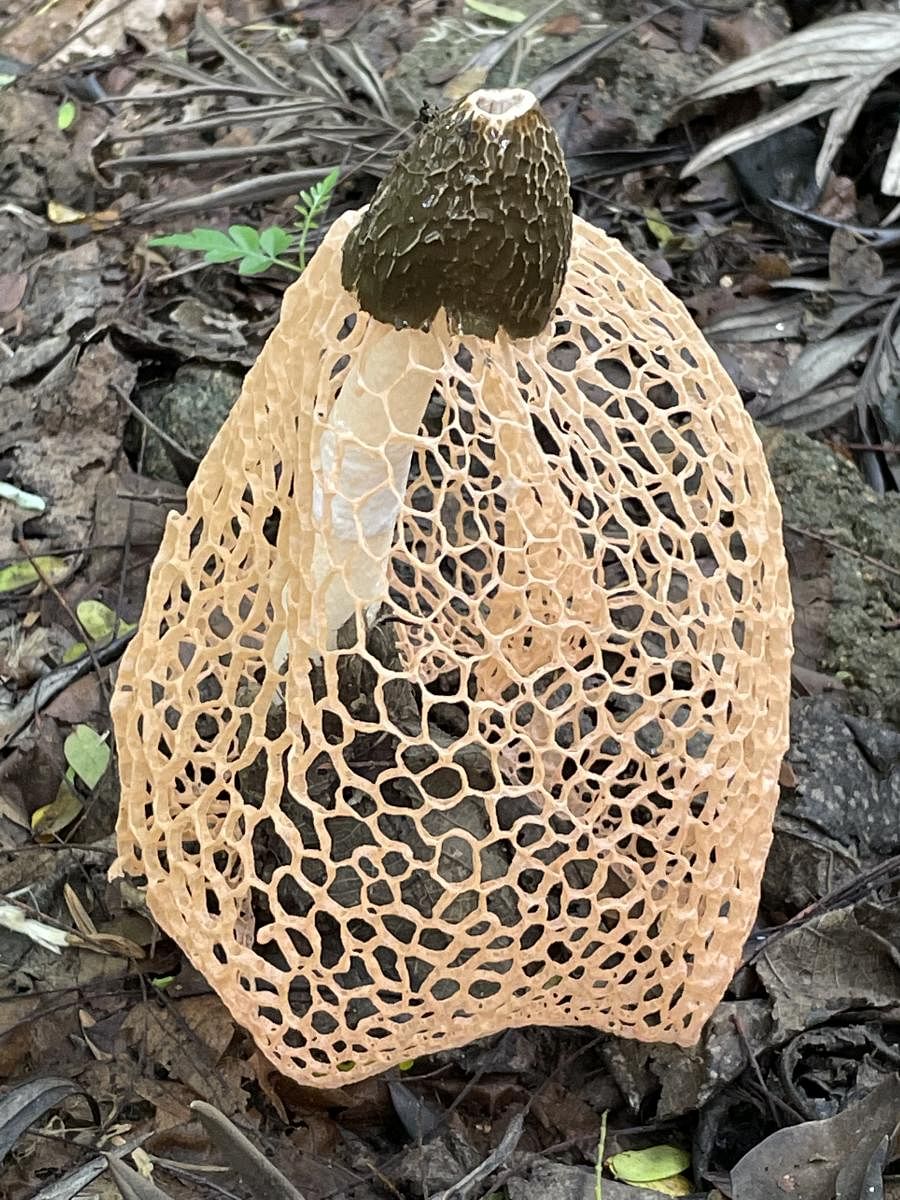
A rare mushroom has made the Indian Institute of Science (IISc), Bengaluru, its home. It is pretty to look at but also stinky. It is called Phallus Indusiatus.
Unlike the bell-shaped mushrooms, it is topped with a bridal veil-like structure, or a lacy skirt as some also like to describe. It is called the bridal veil stinkhorn, veiled lady or bamboo mushroom in common parlance.
But these can only be sighted in a few places inside the 400-acre wooded IISc campus.
“They can be found along the walkway of the Molecular Biophysics unit and near the swimming pool. We have been spotting them at the same spots for the past five years,” says Sharath Ahuja, retired technical officer, IISc.
“It fruits in a soggy and wet atmosphere. It needs continuous rain and humid weather. The Bengaluru monsoon is perfect for it to grow,” Sharath adds. Perhaps why IISc professor S K Sikdar spotted it a few days ago on the campus. “I have tried looking
for this mushroom in other parts of the city but I have not come across it anywhere else,” adds Sharath.
“Many believe this fungus originated in China and we have no idea how it ended up at the IISc. That is the beauty of having such a biologically-diverse campus,” he says. “Which is why it is important to preserve green spots,” he comments on the rampant construction that is razing down sites of ecological value in cities.
The bridal veil stinkhorn used to be a delicacy in ancient China and would go in chicken soups and hotpots on special occasions. However, certain varieties are known to be poisonous.
Decoding the name
The name Phallus Indusiatus tells a lot about this mushroom. “Like all Phallus species, this is saprobic, that is, it derives nutrients after breaking down the wood and plant organic matter. The fruit bodies grow singly or in groups on the ground and among wood chips,” explains Sharath Ahuja.
Insidium means ‘outer skirt’ in Latin. “The mushroom is most known for its lacy skirt, which is often white or a shade of yellow or orange. The skirt can be 7 to 25 cm long, enough to reach the ground and it lasts for a couple of days,” he adds.
And, it emits a foul smell. “This is a given as it belongs to the stinkhorn family. The head of the mushroom is covered with a gelatinous material, which gives off a foul smell but attracts a variety of flies,” he says.